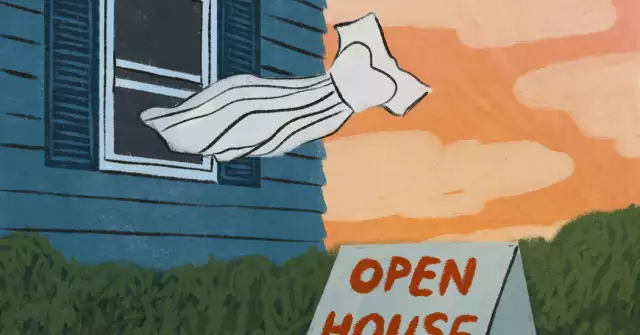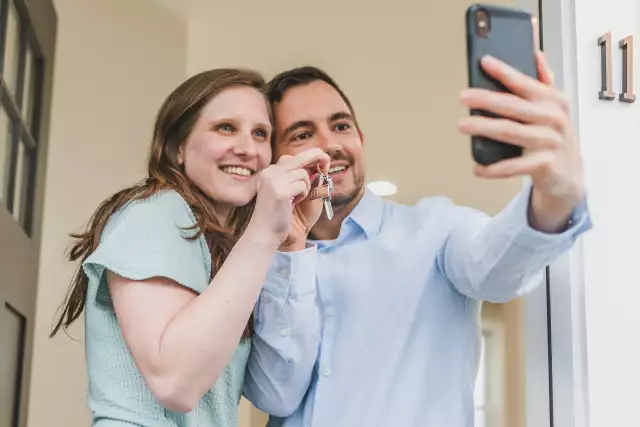Open Houses Present an Inviting Target for Thieves
Open Houses Present an Inviting Target for Thieves
When my grandmother passed away in 1981, my mother, the executor of her estate, oversaw the selling of her one-bedroom apartment on 72nd Street and Third Avenue. Doyle, the New York-based appraising company, assessed her furnishings, and her personal and sentimental belongings were removed. All that remained was her furniture and my mother’s beautiful satin A-line wedding dress, which was left hanging in the coat closet.
As with any open house, a menagerie of strangers came and went over the course of several days. Thirty minutes after the last onlooker left, my mother went to retrieve her dress only to find the closet empty.
The infamous dress story is now decades old. The lifting of objects — jewelry, tchotchkes and prescription drugs are among the top vanishing items — continues to occur, brokers say.
With warmer weather and the optimism of spring upon us, don’t be surprised if open houses start making a return. Aside from the serious prospective buyer or renter, open houses are hotbeds for those looking for a free lunch, a no-cost activity on a random Sunday, a few decorating ideas or even a future mate. They’re also great opportunities for thieves.
“Kleptomania is a real condition,” said Harriet Norris, a New York-based agent with Douglas Elliman. “I tell clients the hand is quicker than the eye. People tend to pick up little things: frames, silver pieces, Limoges boxes. They go easily from the table to the pocket.”
Read Hayes, a research scientist and criminologist at the University of Florida, predicts that thefts will increase as open houses return to their prepandemic rhythm.
“Being confined to our homes during Covid weakened our ability to self-regulate and have self-control. That’s increased our risk-taking behavior,” he said. “People are also angry, pent-up and irritable. They feel owed.”
Rachel DiSalvo, a New Jersey-based agent with Keller Williams Park Views Realty, said open houses pose a fundamental problem: You are inviting strangers into your home and some strangers are entrepreneurial thieves.
She should know. Years ago, Ms. DiSalvo was assisting an agent at an open house when a samurai sword the size of a machete went missing. “It was on the wall when we started, and not when we ended,” she said. “People feel a thrill and a sense of entitlement to take something, whether it’s a candle or a decorative item. They think, Hey, I like this. I want it.”
Dr. Hayes also cited the internet as a factor in the rise of bad behavior.
“If you take something, it’s easy to turn that into money by selling it online,” Dr. Hayes said. “Others want to show off what they took by making videos and being part of the TikTok culture.”
To help prevent a sticky finger situation, Dr. Hayes suggested using nanny cams or other visual recording devices and displaying “camera in use” signs throughout the house. “And have a camera prominently exposed, even if it’s just for show, so that people think their face is being caught,” he said. “These visuals affect people’s behavior.”
For the past two years, thanks to Covid-19, disappearing items have been less of a concern because open houses, like so many real estate experiences, shape-shifted. The “come anytime” process was suspended, and the number of people who could attend any one event was limited and monitored. Most buyers needed an appointment to view an apartment, which they booked in advance, and they visited with an accompanying broker. No more than two people or perhaps a single family were allowed inside an apartment at a time. Early arrivals had to wait outside the building until it was their turn.
Ms. Norris has never experienced theft while showing an apartment. But she’s always on the lookout. “Clients leave all sorts of things out — jewelry, money,” she said. “One time, a client left her Rolex watch in a dish in the baby’s room. When I mentioned she should put it away, she told me it was fake. That doesn’t matter to the person who’s going to steal it. They’ll take it now and check later.”
And let’s not forget staging, which offers another opportunity for thieves to help themselves.
“One time, I started an open house with three translucent gemstone sticks stacked on a book. When I came back into the room, there was only one. It wasn’t substantial, but it was annoying,” said Ms. DiSalvo, who added that whoever is paying for the staging is responsible for the missing items. “Objects like that often go less recognized. People know these homes are not occupied so no one is accounting for these belongings every day.”
A wedding dress is sentimental; so is jewelry. It’s also easier to steal. Irreplaceable family heirlooms can fit perfectly into someone’s hands, before finding their way into a pocket or purse.
“I had a client where someone stole $16,000 worth of jewelry that was inside her dresser drawer in a jewelry box. She went to put it on; it was gone,” said Stephen Alessi, owner of an eponymous interior design firm, based in New York, that also does staging. Staging jobs, which usually run one-to-three months, can cost $10,000 to $45,000.
Among the items that have gone missing over the years, said Mr. Alessi, have been a pricey bottle of whiskey, a cigarette box displayed on a coffee table and a pocket watch housed under a glass dome. “And there’s always one or two less towels,” he added. “People do things in bathrooms, or they want a new, fluffy white towel, which is what we put out.”
And that’s the conundrum.
“You want to make a home feel comfortable, but the items you leave out can’t be too nice or else they can disappear,” Mr. Alessi said.
You want your guests “to remember the space, not what you own,” he said.
To combat the problem, brokers suggest removing all desirable objects — from medications to eye-catching watches and jewelry — from sight and from drawers, because as Ms. Norris mentioned, “People open and close things. It’s not always appreciated, but they are there to look around.”
Since Airbnb exploded in popularity, more people have chosen a specific closet to store their important belongings and installed impressively strong locks to protect them. Relying on a home safe, if large enough, is another option. Or, if you trust your neighbors, you can ask them to watch over your valuables temporarily.
“Take photos of each room paired with a corresponding inventory list before you start an open house, even before the broker arrives, who should do the same,” advised Mr. Alessi, who always does a lap with clients in case they’ve missed something. “Not everyone understands that what they have out is valuable.”
The wedding dress was never recovered, but my mother got over the loss. Though she doesn’t have the iconic garment to pass down to me, she does have this story. Forty years later we’re still telling it.





